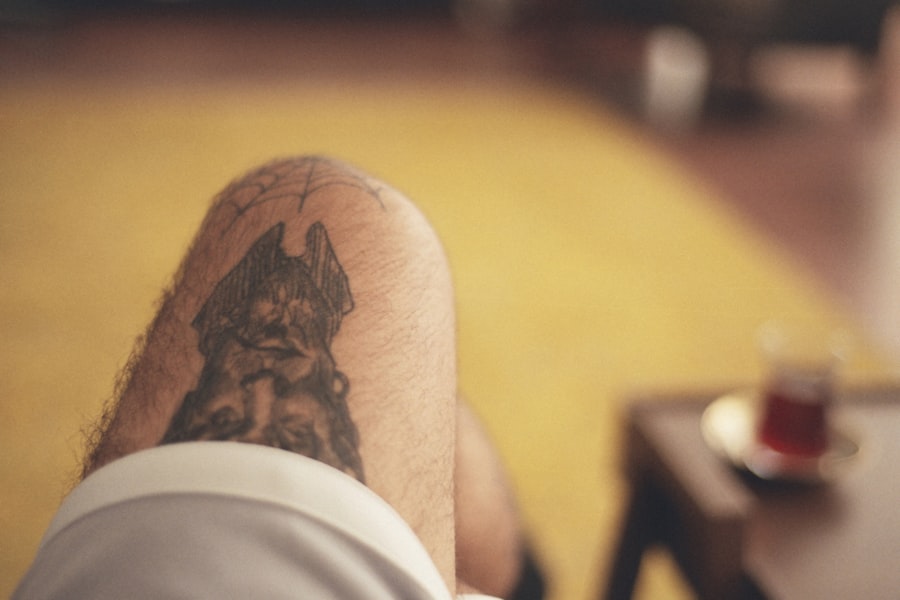The history of sailor tattoos, particularly those associated with the Drake Passage, is steeped in maritime tradition and lore. The Drake Passage, named after the famed English explorer Sir Francis Drake, has long been a treacherous route for sailors navigating between the southern tip of South America and Antarctica. As early as the 16th century, sailors began to adorn their bodies with tattoos that symbolized their experiences and the challenges they faced at sea.
These tattoos served not only as personal markers of their journeys but also as badges of honor, representing survival against the formidable forces of nature. In the early days of exploration, tattoos were often simplistic, featuring symbols that conveyed a sailor’s achievements or experiences. As the dangers of the Drake Passage became more widely known, the tattoos evolved to reflect the perilous nature of this maritime route.
Sailors would often ink images of storms, waves, and mythical sea creatures, each representing a story or a lesson learned during their voyages. Over time, these tattoos became a rite of passage for sailors who braved the unpredictable waters of the Drake Passage, creating a rich tapestry of history that continues to resonate with modern mariners.
Key Takeaways
- Drake Passage sailor tattoos have a rich history dating back to the early explorers and sailors who crossed the treacherous waters of the passage.
- The significance of Drake Passage in nautical lore is reflected in the iconography of sailor tattoos, often featuring symbols of strength, resilience, and navigation.
- Getting a Drake Passage sailor tattoo is a ritual that holds deep meaning for sailors, symbolizing their journey through the challenging waters and their connection to maritime traditions.
- The meaning behind Drake Passage sailor tattoos is rooted in the experiences and superstitions of sailors, representing protection, good luck, and a sense of belonging to the seafaring community.
- The influence of Drake Passage sailor tattoos on modern tattoo culture can be seen in the continued popularity of nautical-themed tattoos and the incorporation of traditional sailor designs.
The Significance of Drake Passage in Nautical Lore
The Drake Passage holds a prominent place in nautical lore, often regarded as one of the most challenging and dangerous waterways in the world. Its reputation is built on the fierce winds and turbulent seas that can arise without warning, making it a formidable barrier for even the most seasoned sailors. This treacherous environment has inspired countless tales of bravery and survival, contributing to its legendary status in maritime culture.
Sailors who successfully navigated these waters often returned with stories that would be shared among their peers, further solidifying the passage’s place in nautical mythology. In addition to its physical challenges, the Drake Passage is also steeped in stories of adventure and discovery. It has been a gateway for explorers seeking to chart new territories and understand the mysteries of the Southern Ocean.
The passage has witnessed significant historical events, including expeditions by renowned figures such as Ernest Shackleton and Robert Falcon Scott. These narratives have woven themselves into the fabric of maritime history, inspiring generations of sailors to honor their experiences through tattoos that symbolize their connection to this legendary waterway.
The Iconography of Drake Passage Sailor Tattoos

The iconography associated with Drake Passage sailor tattoos is rich and varied, reflecting both the dangers of the sea and the personal journeys of those who traverse it. Common motifs include ships battling fierce waves, compasses symbolizing navigation and direction, and mythical creatures like krakens or mermaids that embody the mysteries of the ocean. Each tattoo serves as a visual representation of a sailor’s experiences, fears, and triumphs while navigating the unpredictable waters of the Drake Passage.
Moreover, many sailors choose to incorporate elements that signify protection and good fortune. For instance, anchors are frequently depicted in tattoos as symbols of stability amidst chaos, while swallows are often inked to represent safe return home after long voyages. These symbols not only convey personal meaning but also connect sailors to a broader community that shares similar experiences and beliefs about life at sea.
The artistry involved in these tattoos often reflects individual styles and preferences, making each piece unique while still adhering to traditional themes.
The Ritual of Getting a Drake Passage Sailor Tattoo
| Metrics | Data |
|---|---|
| Number of Sailors | 100 |
| Percentage of Sailors with Tattoos | 80% |
| Most Common Tattoo Design | Anchors |
| Cost of Getting a Tattoo | 100-200 |
| Time Taken for Each Tattoo | 1-2 hours |
The ritual surrounding the acquisition of a Drake Passage sailor tattoo is often steeped in camaraderie and shared experience among sailors. For many, getting a tattoo is not merely an act of self-expression but a rite of passage that signifies their commitment to the maritime lifestyle. This ritual often takes place in informal settings, such as aboard ships or in coastal towns frequented by sailors.
The atmosphere is typically one of celebration, with fellow crew members gathering to witness and support their shipmate as they undergo this transformative experience. The process itself can vary widely depending on individual preferences and local customs. Some sailors may choose to visit professional tattoo artists in port cities known for their maritime culture, while others may opt for more spontaneous decisions made in camaraderie with fellow sailors.
Regardless of the method, there is often a sense of shared understanding among those present; each tattoo represents not just an individual story but also a collective narrative that binds them together as members of a unique community.
The Meaning Behind Drake Passage Sailor Tattoos
The meanings behind Drake Passage sailor tattoos are deeply personal and multifaceted. For many sailors, these tattoos serve as reminders of their resilience in facing the challenges posed by the sea.
These tattoos can also symbolize personal growth and transformation, marking significant milestones in their lives as mariners. Additionally, these tattoos often serve as talismans against misfortune while at sea. Many sailors believe that certain symbols can provide protection from the dangers inherent in maritime life.
For instance, an image of a lighthouse may represent guidance through treacherous waters, while a depiction of a ship’s wheel can signify control over one’s destiny amidst chaos. In this way, Drake Passage sailor tattoos become not only expressions of identity but also powerful symbols imbued with hope and strength.
The Influence of Drake Passage Sailor Tattoos on Modern Tattoo Culture

Drake Passage sailor tattoos have significantly influenced modern tattoo culture, particularly within maritime communities and among those who identify with nautical themes. The resurgence of interest in traditional tattoo styles has led to a renewed appreciation for the artistry and symbolism associated with sailor tattoos. Contemporary tattoo artists often draw inspiration from classic designs that have stood the test of time, incorporating elements from historical maritime tattoos into their work.
Moreover, the stories behind these tattoos continue to resonate with individuals beyond the sailing community. As more people seek to connect with their own personal narratives through body art, the themes associated with Drake Passage sailor tattoos—such as adventure, resilience, and connection to nature—have found their way into mainstream tattoo culture.
Famous Sailors and Explorers with Drake Passage Sailor Tattoos
Throughout history, numerous famous sailors and explorers have been known to bear tattoos that reflect their experiences navigating the treacherous waters of the Drake Passage. Figures like Sir Francis Drake himself are often romanticized in tales that highlight their daring exploits and adventures at sea. While specific records of their tattoos may be scarce, it is widely believed that many prominent figures embraced this form of self-expression as a testament to their journeys.
In more recent times, adventurers such as Ernest Shackleton have become iconic figures associated with exploration in polar regions. Shackleton’s expeditions through icy waters have inspired countless sailors who admire his tenacity and leadership during challenging circumstances. While there may not be direct evidence linking these explorers to specific tattoos related to the Drake Passage, their legacies undoubtedly contribute to the allure and significance of sailor tattoos within maritime culture.
The Connection Between Drake Passage Sailor Tattoos and Maritime Superstitions
Maritime superstitions have long been intertwined with sailor culture, influencing beliefs about luck, fate, and protection at sea. Many sailors who navigate the perilous waters of the Drake Passage adhere to various superstitions that inform their choices regarding tattoos. For instance, some believe that certain symbols can ward off bad luck or ensure safe passage through treacherous waters.
This connection between tattoos and superstition adds another layer of meaning to these body art forms. Common superstitions among sailors include beliefs about specific animals or symbols that bring good fortune or protection from harm. For example, many sailors opt for tattoos depicting dolphins or other marine life thought to guide them safely home.
Additionally, some may choose designs that incorporate elements like stars or compasses—symbols traditionally associated with navigation—to invoke favorable conditions during their voyages. This interplay between tattoo art and superstition reflects a deep-seated desire for safety and reassurance amidst the uncertainties of life at sea.
The Evolution of Drake Passage Sailor Tattoos Over Time
The evolution of Drake Passage sailor tattoos over time mirrors broader changes in maritime culture and tattoo artistry itself. In earlier centuries, tattoos were often rudimentary and primarily served practical purposes—marking identity or denoting rank within a crew. As tattooing techniques advanced and artistic styles evolved, so too did the complexity and symbolism behind these designs.
Sailors began to embrace more intricate artwork that reflected not only their personal experiences but also broader cultural influences. In recent decades, there has been a resurgence in interest surrounding traditional tattoo styles rooted in maritime history. Modern tattoo artists frequently draw inspiration from classic sailor designs while incorporating contemporary elements that resonate with today’s audiences.
This evolution has led to an exciting fusion of old and new styles—resulting in unique interpretations that honor tradition while embracing innovation. As such, Drake Passage sailor tattoos continue to evolve alongside changing societal attitudes toward body art and self-expression.
The Global Spread of Drake Passage Sailor Tattoo Traditions
The traditions surrounding Drake Passage sailor tattoos have transcended geographical boundaries over time, spreading across cultures and continents as maritime exploration expanded globally. As sailors traveled to distant shores, they brought with them not only tales of adventure but also their tattooing practices—leading to cross-cultural exchanges that enriched local tattoo traditions worldwide. This global spread has resulted in diverse interpretations of sailor tattoos that reflect regional influences while maintaining core themes associated with maritime life.
In contemporary society, this globalization is further amplified by social media platforms where individuals share their tattoo stories and experiences from around the world. Online communities dedicated to tattoo culture allow for greater visibility into different styles and meanings associated with sailor tattoos—fostering connections among enthusiasts regardless of location. As such, Drake Passage sailor tattoo traditions continue to thrive within an increasingly interconnected world.
Preserving the Legacy of Drake Passage Sailor Tattoos in Contemporary Maritime Communities
Preserving the legacy of Drake Passage sailor tattoos within contemporary maritime communities involves both honoring traditional practices while adapting them to modern contexts. Many sailors today recognize the importance of maintaining these cultural traditions as they navigate an ever-changing world influenced by technology and globalization. Efforts are being made to document stories behind specific designs—ensuring that future generations understand their significance within maritime history.
Additionally, contemporary tattoo artists play a crucial role in keeping this legacy alive by incorporating traditional elements into their work while also pushing boundaries through innovative designs. Workshops and events focused on maritime culture often feature discussions about tattoo history—encouraging dialogue among sailors about their shared experiences at sea. By fostering connections between past and present practices surrounding Drake Passage sailor tattoos, communities can ensure that this rich heritage continues to thrive for years to come.
In conclusion, Drake Passage sailor tattoos represent more than just body art; they embody centuries’ worth of stories, traditions, and connections forged through shared experiences at sea. As these tattoos continue to evolve alongside changing cultural landscapes, they remain an enduring symbol of resilience—a testament to those who dare to navigate life’s unpredictable waters.
Sailors who have braved the treacherous waters of the Drake Passage often commemorate their journey with a distinctive tattoo, symbolizing their courage and resilience. This tradition is steeped in maritime history, where tattoos serve as badges of honor for seafarers. For those interested in exploring more about the cultural significance of sailor tattoos and their historical roots, you can find a related article on the topic by visiting this page. This article delves into the rich tapestry of maritime traditions and the stories behind these iconic symbols.
WATCH NOW! Drake Passage: Earth’s Deadliest Waters Revealed
FAQs
What is the Drake Passage?
The Drake Passage is the body of water between the southern tip of South America and the northern tip of the Antarctic Peninsula. It is known for its rough seas and challenging sailing conditions.
What is a Drake Passage sailor tattoo?
A Drake Passage sailor tattoo is a tattoo that is often obtained by sailors who have successfully crossed the Drake Passage. It is a symbol of their accomplishment and a way to commemorate the challenging journey.
What are common designs for Drake Passage sailor tattoos?
Common designs for Drake Passage sailor tattoos often include nautical symbols such as anchors, ships, compasses, and other maritime imagery. Some may also incorporate elements of the Antarctic landscape or wildlife.
What is the significance of a Drake Passage sailor tattoo?
A Drake Passage sailor tattoo holds significance as a symbol of resilience, bravery, and the ability to conquer challenging conditions at sea. It represents the sailor’s experience and achievement in navigating one of the most treacherous stretches of water in the world.
Are there any specific traditions or rituals associated with obtaining a Drake Passage sailor tattoo?
While there are no specific universal traditions or rituals associated with obtaining a Drake Passage sailor tattoo, it is often a personal decision for sailors to commemorate their journey and may be accompanied by a sense of camaraderie among fellow sailors who have also crossed the passage.
